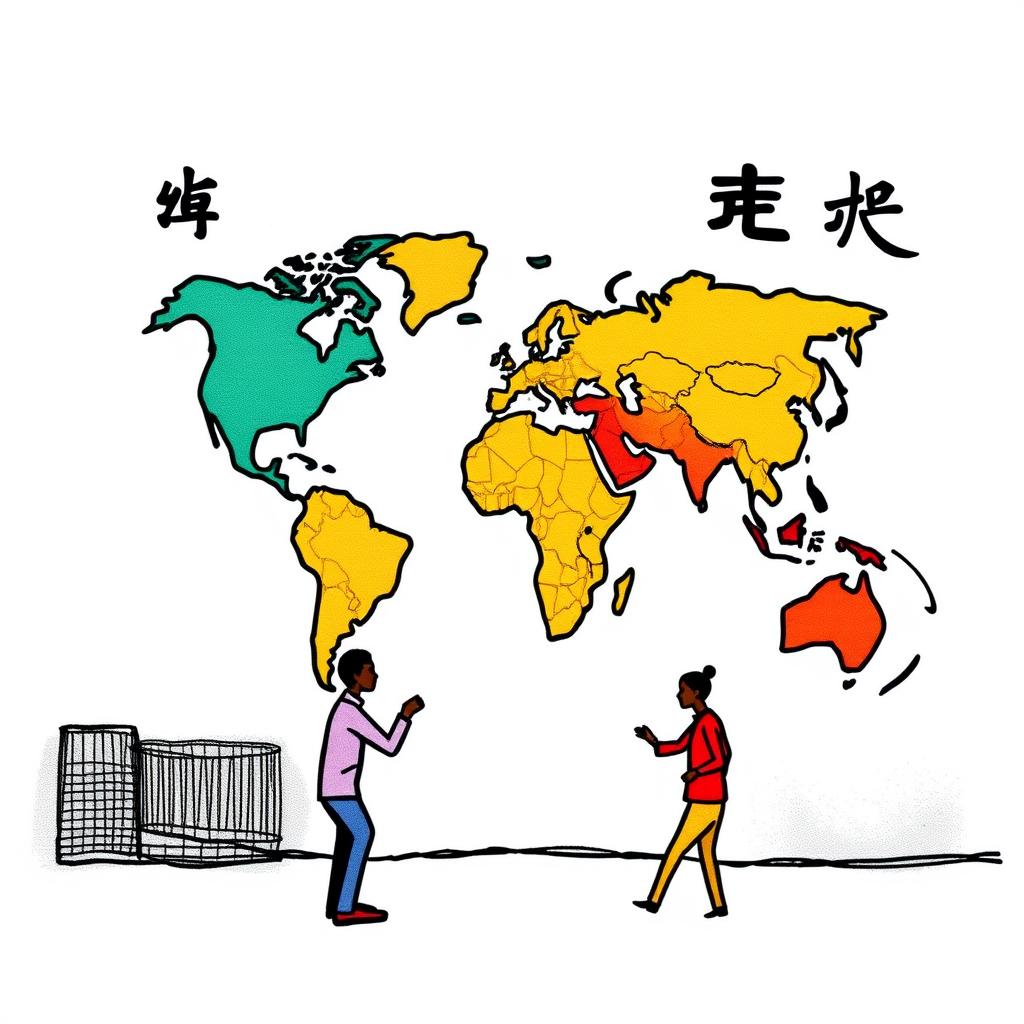The Art of Multilingual Communication: Mastering Tone for Global Success
Estimated reading time: 7 minutes
- Understand the importance of tone in global communication.
- Learn practical strategies to adapt your messaging across cultures.
- Explore the challenges of tone adaptation and how to overcome them.
- Embrace cultural nuances for effective communication.
- Take actionable steps to improve your communication strategies.
Table of Contents:
- Why Tone Matters in Global Communication
- Understanding the Challenges of Tone Adaptation
- Practical Strategies for Mastering Tone Adaptation
- Taking the Next Steps Towards Mastery
- Conclusion
Why Tone Matters in Global Communication
Tone is the invisible thread that binds words to their meaning. A brand’s voice, whether professional, empathetic, or charmingly humorous, must echo through every translation. However, when navigating the nuances of various languages and cultures, one cannot rely solely on direct translations. The fear is palpable: a poorly adapted tone can fracture connections and lead to significant miscommunications.
Imagine a company whose branding thrives on lively and irreverent humor; in a more conservative culture, that same messaging might cause outrage. This blog post will provide you with the tools and insights necessary to confidently navigate the labyrinth of multilingual tone adaptation. Our goal is to empower you to not only overcome these challenges but to excel in them.
At professionalizeitto.me, we specialize in helping individuals and businesses refine their communication strategies. By equipping you with the insights needed to master multilingual tone adaptation, we’ll ensure your messages resonate with clarity and conviction.
Understanding the Challenges of Tone Adaptation
The Complexities of Cultural Nuances
Navigating the world of multilingual communication often feels like walking through a minefield without a map. When humor, idioms, and colloquialisms come into play, the potential for misunderstanding multiplies. Edward T. Hall’s research on communication styles categorizes cultures into high-context and low-context frameworks. In high-context cultures, such as those in many Asian and Arab countries, subtleties are emphasized and non-verbal cues hold significant weight. Conversely, low-context cultures, like those found in North America and Western Europe, prioritize direct communication.
This divergence is critical for businesses to consider. Take the example of a German engineer who approaches negotiations with candor, only to encounter a Japanese executive favoring indirectness. Bridging these communication styles requires dexterity and understanding.
Consequences of Tone Missteps
Failing to strike the right tone can lead to dire consequences that extend beyond misunderstandings:
- Public Outrage: An ill-conceived marketing campaign can ignite backlash that reverberates through social media, threatening brand integrity.
- Brand Confusion: Inconsistent messaging can dilute brand identity, leading consumers to question a brand’s values.
- Long-Term Reputational Damage: A single misstep in tone can result in lasting damage, as the digital age amplifies every faux pas.
Embracing the Challenge: Our Approach
At professionalizeitto.me, we understand that mastering tone adaptation is not just an operational challenge; it’s a cultural art. Our expert guidance encapsulates both human insight and modern technology to help you communicate effectively across borders.
Practical Strategies for Mastering Tone Adaptation
To excel in this diverse landscape, organizations must implement strategic methods that prioritize both cultural competence and clarity of messaging. Here are key strategies:
1. Employ Skilled Human Translators
- Why: Human translators not only convert language but also act as cultural ambassadors, enabling the accurate portrayal of tone and sentiment.
- Benefit: Their expertise ensures that the nuances of language are preserved, avoiding costly errors in tone adaptation.
2. Develop Comprehensive Style Guides
- What: Outline the desired tone for each market, complete with examples of both appropriate and inappropriate language.
- Benefit: Consistency in brand voice across different markets cultivates trust and clarity in communication.
3. Conduct Cultural Sensitivity Training
- Why: Equip employees with knowledge of cultural nuances to foster more effective cross-cultural communication.
- Benefit: This awareness minimizes the potential for misunderstandings, enhancing overall employee and client interactions.
4. Seek Feedback from Native Speakers
- How: Before launching any global communication campaign, gather insights from native speakers who can pinpoint potential pitfalls.
- Benefit: This feedback loop serves as essential preemptive damage control, ensuring smoother communication.
5. Embrace Transcreation
- What: Go beyond translation to recreate messages culturally and emotionally relevant for the target audience.
- Benefit: Transcreation fosters a stronger emotional connection, ensuring the message evokes the intended feelings or actions across cultures.
Here’s a quick reference table summarizing these strategies:
| Strategy | Description | Benefits |
|---|---|---|
| Employ Skilled Human Translators | Engage culturally adept translators for tone adaptation. | Accurate tone with cultural sensitivity. |
| Develop Style Guides | Craft guidelines for tone and language for each market. | Consistent brand voice creates clear communication. |
| Conduct Cultural Sensitivity Training | Train teams on cultural differences in communication. | Reduces misunderstandings, promotes effective interactions. |
| Seek Feedback from Native Speakers | Collect insights before launching global campaigns. | Spot errors ahead of time, enhancing message accuracy. |
| Embrace Transcreation | Adapt messages to fit cultural context and emotion. | Builds stronger emotional ties to brand messaging. |
Taking the Next Steps Towards Mastery
As organizations expand into global markets, the importance of mastering tone adaptation can’t be overstated. Miscommunication can spell disaster, while adept handling of cultural nuances can enhance relationships and open up new opportunities.
At professionalizeitto.me, we offer the tools and expertise you need to perfect your communications. Whether you’re looking to refine your emails, create impactful marketing campaigns, or engage with broader audiences effectively, our services can help.
Start Your Journey Today!
- Subscribe to Our Newsletter: Get insights directly to your inbox that will help transform your writing.
- Book a Consultation: Work with our experts to evaluate your current communication strategies and receive tailored advice.
- Access Premium Resources: Explore our library of templates that can guide you through various forms of communication.
By taking that next step, you position your organization not only to communicate but to connect with audiences worldwide. In the art of international communication, it’s not just the words that matter; it’s how you say them that counts.
Conclusion
Successful multilingual tone adaptation is a demanding yet rewarding endeavor. It requires an understanding that communications are a reflection of cultural values, norms, and sensitivities. By employing skilled human translators, developing clear style guides, conducting training, and embracing feedback, organizations can enhance their global relationships.
Join us at professionalizeitto.me and discover the power of impactful communication. Together, we can create messages that resonate across borders, fostering relationships that transcend language barriers.
Meta Description: Unlock the secrets to successful multilingual tone adaptation. Explore best practices for global communication and enhance your messaging at professionalizeitto.me.
Keywords: multilingual communication, tone adaptation, cultural nuances, human translators, transcreation, communication strategies.
FAQ
What is tone adaptation?
Tone adaptation is the process of modifying your message’s tone to fit various cultural contexts while preserving its original intent and meaning.
Why is tone important in communication?
Tone conveys emotions and attitudes. It is crucial for ensuring your message resonates well with the target audience and avoids misunderstandings.
How can I improve my tone adaptation skills?
You can improve your skills by studying cultural differences, working with native speakers, and employing experienced translators who understand cultural nuances.
What are the consequences of failing to adapt tone?
Failing to adapt tone can lead to public outrage, brand confusion, and long-term reputational damage affecting your organization’s credibility.
What is transcreation?
Transcreation is a process that goes beyond translation, where messages are recreated to maintain emotional resonance and cultural relevance for the target audience.



